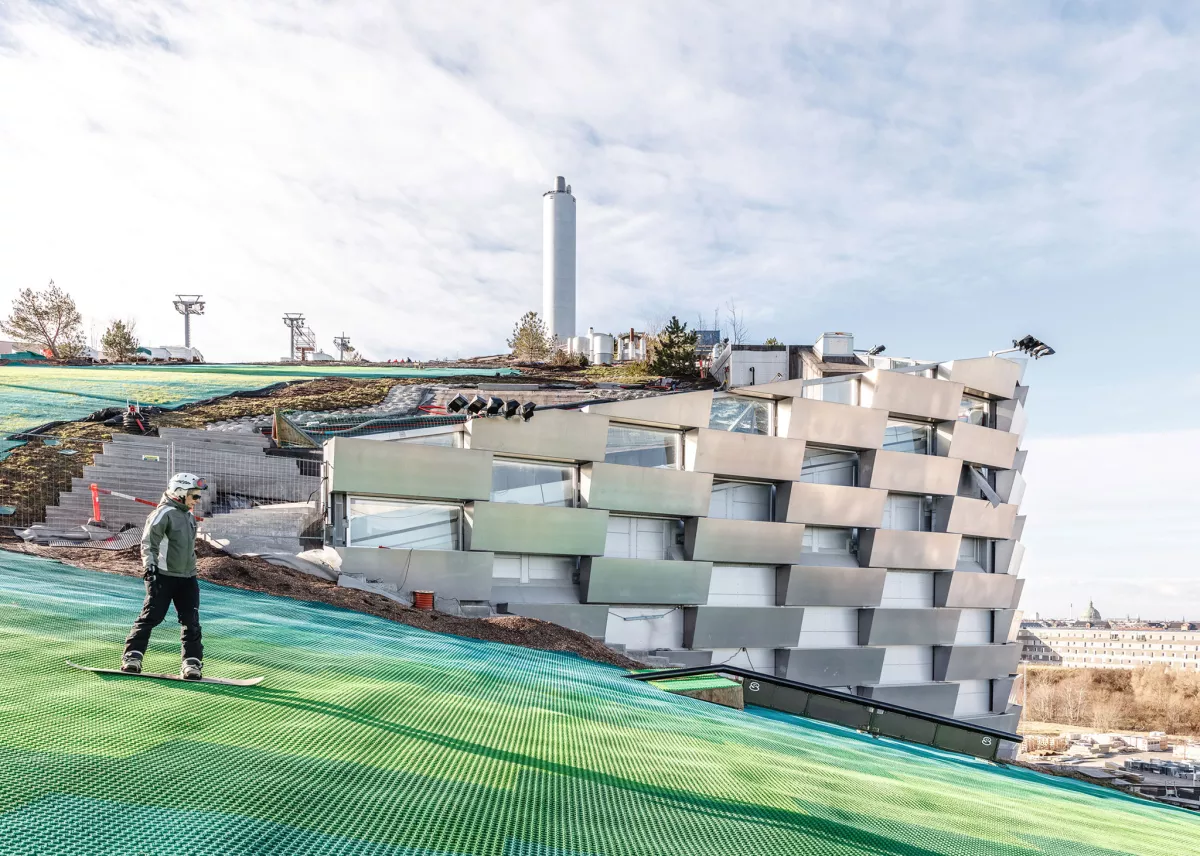Dry slopes: Green alternative for skiing enthusiasts Insight into Copenhagen’s innovative landmark
As climate change impacts traditional ski resorts, dry slope skiing may offer a sustainable future for the sport. CopenHill in Copenhagen exemplifies this innovation, featuring a 400m synthetic ski piste made of Neveplast, which mimics hard-packed snow, built on the roof of a waste processing plant.
Built on top of a futuristic building with a sloping roof 85 metres high, it looks just like a ski slope, except that it's green and not white.
As an article featured on the website of the World Economic Forum reports, Copenhill's director Christian Ingels acknowledges that everybody is surprised when they look at it and it's not snow. "It's green dry-slope material. After one or two runs, your mind is automatically adjusting so you feel exactly like skiing."
Ellen Dansgaard, a frequent skier, says, "If you've skied on hard-packed snow, that's what dry slope feels like. The best part is you can ski all year and practice your skills." Dry slopes are practical for ski resorts struggling with inconsistent snow. Thorne recalls, "A guy in the Czech Republic contacted me saying they can't guarantee snow anymore, so he wants to put in a dry slope." Ski writer Rob Stewart agrees, stating, "Artificial ski slopes make a lot of sense. If it snows on top, you won’t know the synthetic surface is there. But if the snow doesn’t arrive, you still have a surface to ski on."

Climate change has shortened snowpack seasons by over 15 days since 1955, with the US Environmental Protection Agency forecasting, that artificial snow demand could increase by up to 97% by 2050. An article by the BBC on this "green" sporting magnet explains that dry slopes originated in the 1950s when Jacques Brunel patented the "Artificial Skiing Mat." While popular in the UK during the 1970s, many dry slopes closed in the 1990s. However, Ski writer Patrick Thorne notes a resurgence as resorts adapt to unreliable snow. "In China, hundreds [of dry slopes] have been built in cities, pushing it as an activity for everyone," he says.
Some resorts are cautiously testing dry slopes. For instance, Tremblant, a four-season resort, launched a dry slope as a summer activity to gauge interest. Established dry slopes enjoy strong community support, like Scotland’s Polmonthill Ski Slope, which locals saved from closure. Ski instructor Bailey Ross emphasizes the benefits: "Skiing on a dry slope is harder because movements on snow can shift under you. But once you're comfortable, it’s amazing."
Manchester-based Catherine Beresford, a dry slope veteran, explains its technical advantages: "Dry slopes are less forgiving, but that's positive because you become a better skier. When you take those skills onto snow, you have a broader knowledge of skiing."
In the US, Liberty Mountain Snowflex Centre in Virginia has adapted to limited winter conditions, celebrating 15 years of operation. Derek Woods, the Centre’s director, observes, "We’re seeing more families and first-time skiers. Local resorts have struggled to produce snow, but we’re here year-round."
Dry slope skiing is also gaining traction among cost-conscious consumers. Idalette de Bruin of SNO, a London ski travel business, notes a 150% increase in dry slope visits. "A couple of hours each weekend before a big vacation means you'll hit the slopes with more confidence," she says.
As traditional skiing faces challenges, dry slopes provide a viable alternative, fostering year-round participation and preparing skiers for the mountains.
By Nazrin Sadigova








